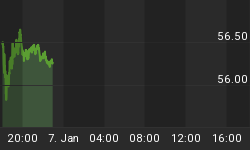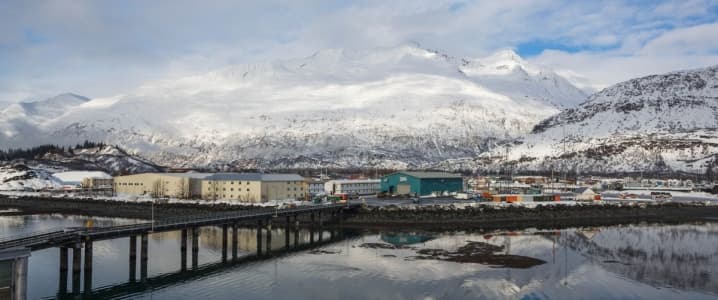Technical teams from the Alaska Gasline Development Corp. (AGDC) and supermajors BP and ExxonMobil will meet next week in Houston to begin a review of the proposed $43 billion Alaska LNG project in an effort to find potential cost reductions so the massive capex project can move forward, Tim Fitzpatrick, an AGDC spokesman said on Tuesday. Discussions will begin on April 2 and last for most of the month, he said, adding that about “25 technical folks from ExxonMobil, BP and AGDC will meet in Houston on the cost reduction workshop.”
The move comes as recently elected Alaska Gov. Mike Dunleavy reviews the project’s financial feasibility, in stark contrast to his predecessor, former Gov. Bill Walker, which promulgated the project both in the state and overseas looking for new customers for the project’s gas. The Anchorage Daily News said recently that Dunleavy ’s message was a sharp contrast to what former AGDC President Keith Meyer often stressed. Meyer and former Governor Walker emphasized the state would only go forward with an LNG pipeline and export plan if it was economical, but there was never an indication the corporation would give up on finding a path forward for Alaska LNG if the current plan ultimately didn’t work.
Dunleavy made changes to the AGDC board in January, replacing Meyer with Joe Dubler who is also taking a more cautious approach to the project and its financial feasibility. Dubler, for his part, told state legislators during a Feb. 27 Alaska Senate Finance subcommittee meeting that AGDC, a quasi-state corporation, holding the state’s dream of a large natural gas pipeline project was in the process of scaling back while evaluating the technical and commercial viability of the project. Dubler emphasized that Dunleavy replaced four board members and hired him to “refocus the corporation.” Related: The World’s Largest Oil Company And Petrochemical Company Merge
“If it is (viable) we’re going to solicit world-class partners for FEED, which is front-end engineering and design and completion of regulatory efforts,” Dubler said at the meeting. “If we do all of our work and we determine that the project does not look like it’s going to be viable we will wind the project down, close the corporation up and return all the current funds that remain to the General Fund,” he added.
Oil major renewed interest
However, on March 8, BP and Exxon Mobil, two of three oil majors that were part of the original four-member Alaska LNG consortium that pulled out in 2016 due to low oil and gas prices, expressed renewed interest in the project - which led to the upcoming meeting in Houston. After BP, Exxon Mobil and Conoco Phillips withdrew from the project three years ago, Walker directed the AGDC to continue work on its own, mainly on the U.S. Federal Energy Regulatory Commission license. All three oil majors that had been part of the consortium are North Slope oil and gas producers.
Massive capex
The project has a massive capex due to several factors. For one, an 800-mile pipeline would have to be built to move gas from North Slope fields to a liquefaction plant in Nikiski (about 60 air miles southwest of Anchorage). Also, much of that pipeline would have to be built on permafrost, adding even more cost. Second, construction costs are much higher in Alaska than for competing LNG projects in the Lower 48, which means that gas sold at the Alaska LNG project would have to bring in higher prices for the project to break even. Some estimates place Alaska LNG project gas exports as high as $10/MMBtu just to be profitable.
Meetings in China
Separate meetings are also slated to be held Shanghai next month with three Chinese companies, led by Chinese state-run oil major Sinopec, that have expressed interest in purchasing LNG from Alaska, Fitzpatrick also said on Tuesday. Meetings will take place during the LNG 2019 conference, set for April 1-5, and will include Bank of China and China Investment Corp., which have been working with Sinopec in discussions with AGDC.
ADVERTISEMENT
By Tim Daiss for Oilprice.com
More Top Reads From Oilprice.com:
- China’s Mad Scramble To Boost Domestic Oil Production
- Sources: Saudis Admit They Want $70 Oil
- Trump’s Last Chance To Subdue Gasoline Prices



















“For one, an 800-mile pipeline would have to be built to move gas from North Slope fields to a liquefaction plant in Nikiski (about 60 air miles southwest of Anchorage.’”
My question: What is the need for an 800 mile pipeline? In the Russian Arctic, Novatek has completed a major LNG production center on the Yamal Peninsula, and is currently shipping LNG across the Northwest Passage to Europe, with plans to supply Asian markets.
Why can’t the US oil partners develop LNG production facilities in the Arctic, taking a page from the Russian project, and ship LNG across the Northern route to Asia, and the Northwest Passage to Europe.
The known and huge untapped reserves of natural gas deposits in northern Canada’s Mckenzie Valley could also become one of the major suppliers to the project,
In the past, Alaska and Canada had plans to develop gas pipelines going south to the US, carrying both Alaskan and Canadian gas, but that project, far more expensive than Alaska’s 800 mile pipeline, became moot with the emergence of the enormous US tight gas industry. Now those reserves are considered stranded assets.